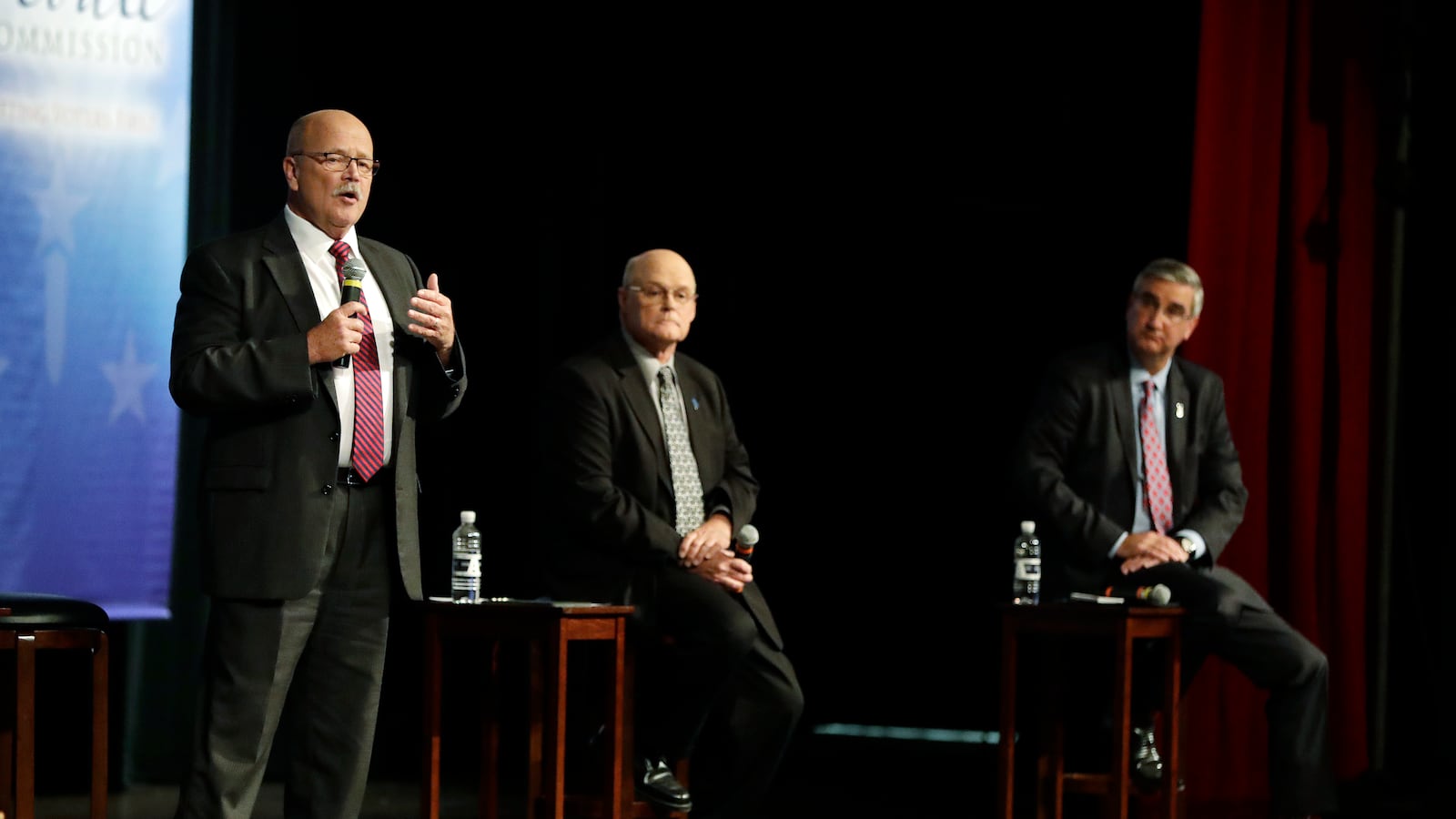This is one of two stories summarizing the basics facts about Indiana’s two major party candidates for governor when it comes to education. A more detailed story about John Gregg’s policy positions can be found here. To learn more about Eric Holcomb, go here. To see all of Chalkbeat’s “basics” stories, go here. To read all of Chalkbeat’s 2016 election coverage, go here.
Tune in to our live blog on Election Day for highlights from the field and updates on the races as results trickle in.
When it comes to education, John Gregg is somewhat skeptical of the education reforms of the last two decades.
As a leader in the Indiana House of Representatives, he voted against the creation of the ISTEP test after a round of calls to his former teachers left him worried that the exam would someday be used to punish teachers and schools. As a lawmaker, he was a strong advocate for traditional public schools, pushing for additional funds for school districts.
But he’s also a pragmatist. Now that’s he’s running for governor in his second try as the state’s Democratic nominee, he has avoided calling for wholesale changes to the state’s education system. Rather he has proposed new programs, like a preschool expansion, and an overhaul of ISTEP, which the state has plans to redesign anyway.
From a small town to the big city
Small town roots in Sandborn, Ind., are a big part of Gregg’s political identity. It’s a small Southern Indiana town of about 400 people. His own education also started small. After graduating from North Knox High School, Gregg attended Vincennes University, where he earned an associate’s degree.
He eventually earned three more degrees: a bachelor’s degree in political science and history from Indiana University, a master’s degree in public administration from Indiana State University and a law degree from Indiana.
Gregg, 62, worked as a lawyer and lobbyist for coal companies before he won a seat in the Indiana House in 1986. He built alliances with organized labor but also forged a reputation for working across the aisle that culminated in his selection as speaker in 1996. He led a House that was evenly divided — 50 Democrats and 50 Republicans.
It’s that experience Gregg often cites as evidence that he can bridge deep political divides on education policy in Indiana.
A second shot to run for governor
Greg left the Indiana House in 2002 and has worked for an Indianapolis law firm since 2005. But in 2012 he re-emerged on the state political scene as the Democrats’ choice to run against Republican Mike Pence for governor.
Pence was returning after more than a decade serving in Washington as an Indiana congressman. The two candidates were vying to replace Mitch Daniels, a popular two-term Republican governor who couldn’t run again due to term limits.
Pence had several advantages going into the race. Indiana leans Republican, he was promising to continue Daniels’ legacy and he was a well-known political figure. Gregg had an uphill path as a Democrat who had been out of office for 10 years.
But Gregg ran more strongly than expected, losing to Pence by just three percentage points. Pence struggled in his first term with backlash from his support of an unpopular legislative push for the Religious Freedom Restoration Act, which many viewed as discriminatory to gays and lesbians. He also battled state Superintendent Glenda Ritz over the direction of the state’s education policy.
About two years ago, Gregg began working toward another run against Pence. But when Republican Presidential nominee Donald Trump picked Pence as his vice presidential running mate,Gregg found himself facing Lt. Gov. Eric Holcomb.
Holcomb has largely aligned with Pence’s education positions, while promising to be more collaborative. Gregg has strongly aligned with Ritz on policy.
What would Democratic control mean?
If Gregg is elected, he could offer considerable support to Ritz, who has clashed with Pence and with his appointees on the Indiana State Board of Education. Going forward, for example, if Gregg were governor, he could appoint state board members who are friendlier to Ritz’s positions.
On policy, Gregg has promised to:
Expand preschool. Pence fought to establish a small pilot program in five counties that helps pay preschool tuition for about 1,500 poor children. That was a first for Indiana, but Gregg wants to go farther. He and Ritz are pushing for statewide universal preschool that would ensure any four-year-old could enroll without cost. This is his signature education proposal.
Testing. Pence has signed onto Ritz’s vision of an state exam that is broken down into smaller tests that would be administered several times during the year. He’d also like to see Indiana use a cheaper “off the shelf” exam rather than continuing to create its own, more expensive test every year.
School choice. The state has placed too much emphasis on choice programs such as charter schools and private school vouchers at the expense of traditional public schools,
Local control. Gregg has said he would push to give local school districts more freedom to try innovative ideas, speaking admiringly about Indianapolis Public Schools’ autonomous “innovation” schools, which are schools that have remained a part of the district even as their management has been turned over to independent school managers.

